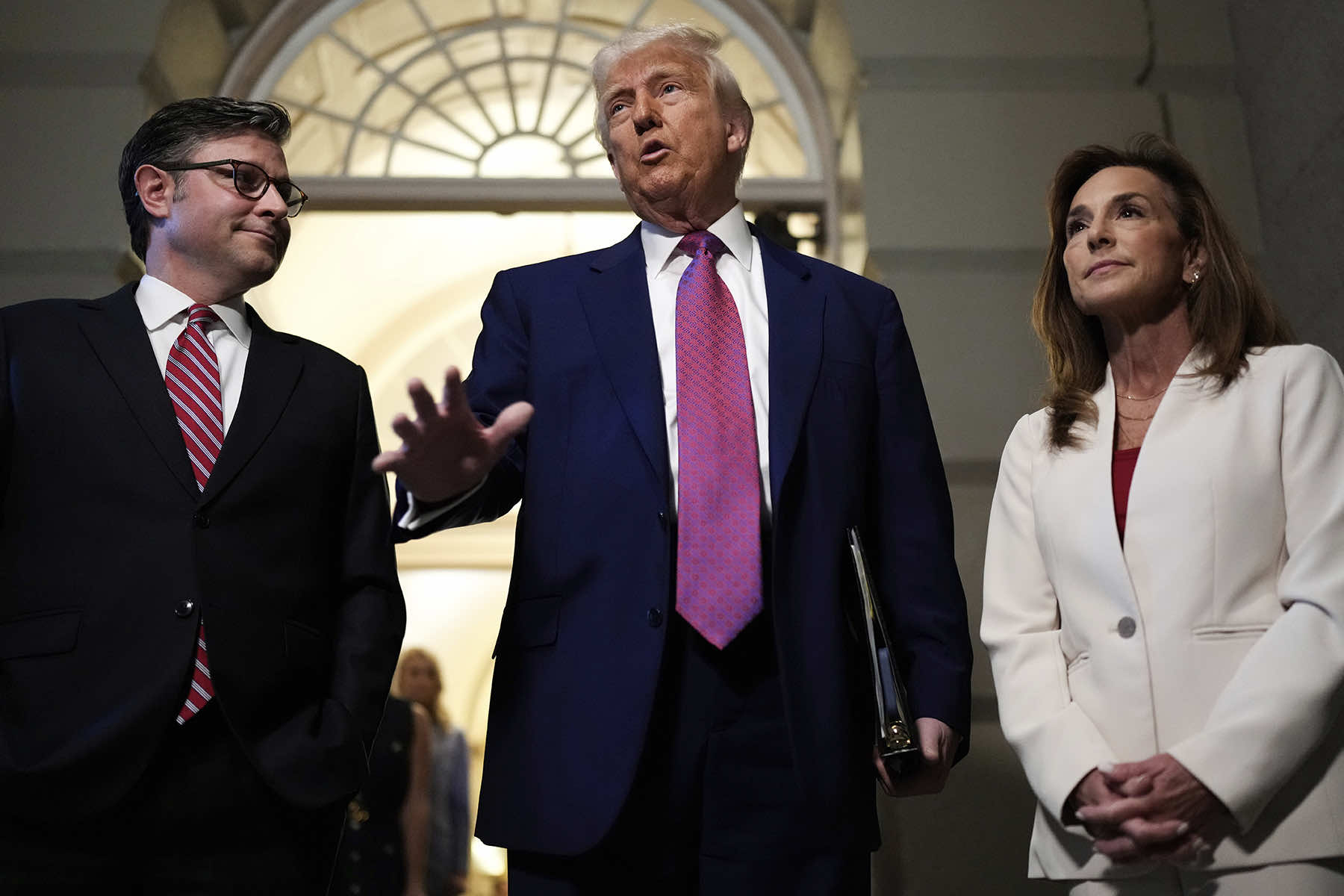
It was a scene that, on its surface, might have seemed like a moment of reckoning. Just one month after Florida’s six-week abortion ban went into effect, Republican Representative Kat Cammack was rushed to the emergency room with an ectopic pregnancy.
It was a condition that, left untreated, is fatal. Medical personnel reportedly hesitated to act swiftly, navigating the new legal terrain shaped by a law she and her party supported. Yet rather than acknowledge the role of Republican policy in putting her life at risk, Cammack turned the blame elsewhere: toward the left, toward Democrats, toward those who had warned of precisely that kind of medical paralysis.
Her refusal to take responsibility, even in the face of personal harm, has become a defining characteristic of Republican politics in the Trump era. The pattern is by now unmistakable. When laws go wrong, when promises collapse, when chaos ensues — the fault, according to the GOP, always lies somewhere else.
At the center of this dynamic is Donald Trump, who campaigned on being the singular force who could fix everything. He would fix health care, fix crime, fix immigration, fix America’s standing in the world.
He alone could do it, he said. But since the beginning of his second occupation of the White House, when every promised outcome has fallen short or become worse, he has not accepted responsibility. He has only pointed to others with blame.
Trump continues to assert that former President Joe Biden is at fault for virtually every national problem that has occurred since he left office in January.
That includes every issue that either began under Trump’s tenure or stem directly from policies he himself enacted.
Trump points to border insecurity, drug trafficking, inflation, and international instability as Biden’s failings, despite having faced identical or worse metrics while in office. Trump’s strategy is not to present evidence or analysis, but to repeat accusations until they calcify in public discourse. In this context, blame is not just rhetoric. It is infrastructure.
The strategy also extends far beyond Trump. The Republican Party’s broader legislative agenda is riddled with contradictions and rhetorical contortions. Members champion legislation that strips away safety nets or limits civil rights, then point to the social fallout as the result of “Democratic leadership.”
They back budget cuts to public education, then campaign on failing schools. They gut oversight and deregulate industry, then fault bureaucrats when disasters occur. Policy consequences are never acknowledged. They are only redirected.
Representative Cammack’s experience is particularly stark, but it is emblematic of a larger system in the Republican playbook. Across the country, GOP lawmakers have supported laws that criminalize reproductive care, burdening doctors with the fear of prosecution and leaving patients in life-threatening limbo.
When those laws begin to claim lives or deny care, the Republican answer is to blame “liberal hysteria,” or vaguely defined “activist judges,” or to insist that the laws are being “misinterpreted.” The goal is not to govern responsibly. It is to control narratives while avoiding accountability.
This pattern is neither accidental nor incidental. It is structural. The Republican Party has, over years, cultivated an ecosystem where lying is not simply tolerated but required.
Campaign promises are rarely meant to be fulfilled. They exist to rally emotions, stoke fears, and mobilize loyalists. When those false promises collapse under scrutiny or fail in practice, misdirection is used in defense.
In this framework, the truth is a liability. Republican officials repeatedly distort their own records, taking credit for laws they refused to support, touting economic metrics that are inaccurate, citing crime trends that contradict FBI data, and claiming victories that belong to previous administrations.
They lie about what they will do, then lie about what they have done, and finally lie about why it all did not work. The cycle is intentional. It allows failure to be framed not as evidence of flawed policy, but as proof of an enemy’s sabotage.
This is why the GOP rage machine continues to target not just political opponents, but the idea of truth itself. Nonpartisan institutions, from the Congressional Budget Office to federal courts to election authorities, are treated as suspect the moment they contradict the Republican narrative.
Expertise is framed as bias, evidence as manipulation, and fact-checking as censorship. This makes it easier to sell the public a version of reality that depends not on data, but on emotional loyalty.
But none of this would be possible without the audience. A sizable portion of the American public is not merely misinformed. They are invested in remaining in the dark. Voters routinely reject verifiable information when it conflicts with their political identity. They consume partisan media that reinforces falsehoods, share conspiracy theories that align with their worldview, and dismiss corrections as partisan attacks. It is not due to ignorance. It is a willful choice.
This deliberate insulation from reality has allowed Republican leaders to sustain a feedback loop in which failure is rebranded as victimhood. When Trump botched the pandemic response, he blamed governors, China, and the World Health Organization. When his immigration policies caused humanitarian disasters, he faulted “Democrat-run cities.”
When inflation surged globally during and after the pandemic, he insisted Biden alone was responsible, ignoring the trillions in spending and tax cuts Trump signed into law, many of which poured fuel on the fire of long-term economic distortions.
Even now, as Trump’s message is not one of plans or solutions. It is a list of grievances. It is a catalogue of betrayals and enemies, all of whom allegedly conspire to block him from achieving greatness. There is no recognition that many of the crises he denounces have roots in his own leadership. He simply erases that context and replaces it with blame.
Republicans in Congress mimic the formula. They stage hearings not to legislate or investigate in good faith, but to stage blame rituals against universities, tech companies, civil servants, or anyone who challenges their worldview.
When their policies result in suffering, whether it is rural hospital closures, poisoned water systems, school book bans, or rising maternal mortality, they attack mayors, teachers, immigrants, or “woke ideology.”
That pattern continues to hold even as Republican lawmakers dominate both statehouses and courts. Control never translates into ownership.
The deeper function of this strategy is to avoid policy coherence altogether. By never accepting responsibility for outcomes, such a political cult does not have to reconcile its internal contradictions.
It can claim to be pro-law enforcement while supporting those who attacked the Capitol. It can oppose deficits while expanding them. It can declare support for veterans while cutting their benefits. So long as blame can be displaced, no reckoning is necessary. Performance replaces governance.
What makes this especially dangerous is the effect it has on political incentives. When lying is rewarded, and when voters cheer on politicians for refusing to back down from obvious falsehoods, the next generation of leaders learns that truth is a liability.
The ideal candidate becomes someone not who understands policy, but who can dominate the blame cycle. Who can always find someone else to fault, who can turn every setback into proof of persecution, who can use outrage as a substitute for answers.
This is the ecosystem in which figures like Cammack find themselves, forced to deny even their own lived experience if it threatens to implicate the party’s lie. Admitting that Republican policies endangered her life would disrupt the narrative, would raise inconvenient questions, would reveal fractures in the image of strength and certainty. Better, from the party’s perspective, to attack the very people who raised the alarm, even if they were right.
In this system, governing is indistinguishable from marketing. Proposals are sold like consumer products, with no guarantee, no durability, and no service after the sale. Once they fail, a new round of scapegoating begins.
The press is blamed for bad coverage. The public is blamed for misunderstanding. Foreign actors are blamed for interference. Opponents are blamed for obstruction. There is always someone else to accuse, never the person in charge. Never Trump.
The result is a politics of evasion. Not just of facts, but of responsibility. Not just of complexity, but of consequence. And at its center stands a man who declared that he alone could fix it all as America’s savior. An inept and feckless man who promised order and prosperity and greatness to get re-elected, and who now spends every waking moment accusing others, but mostly President Biden, for his own self-inflicted failures.
Trump has shown his base that blame is power. That truth can be broken and rebuilt to suit any failure. That loyalty matters more than evidence. And in doing so, he has reshaped a major political party into a machine that does not solve problems. It only sells excuses and profits from the dysfunction.
© Photo
Gil Corzo (AP) and Julia Demaree Nikhinson (AP)















